The Rubin Museum:
Himalayan Art in NYC
It was only from a fellow traveler – the kind you take recommendations from without question, because you know they know what’s up – that I knew of New York’s The Rubin Museum in the first place. It was only because of a favorite country – an almost obsessive appreciation for the beauty of Nepal – that I decided I’d have to make it a priority for my time in New York.
Yet in the end, even without the recommendation of a trusted friend or a borderline obsession with a remote Himalayan country, the Rubin Museum owns a standalone spot as a highlight in New York for the chance to look deeply and intimately into the history and culture of foreign lands; all from the ease of W.17th just a few blocks from a metro (no queueing at the incredibly bad passport control line in Tribhuvan required).
The museum’s collection spans over 1500 years of Himalayan history and culture, with a strong focus on greater Tibet but also a huge variety of pieces from as far afield as Afghanistan, Mongolia, and of course Nepal.
It also, importantly to me, includes a special collection prepared in response to the devastating April 25th earthquake in Nepal. Under the title #HonorNepal, the Rubin Museum has prepared a small special exhibition as well as illumination throughout the permanent collection and long-term exhibitions to highlight the culture and contributions of Nepal to Himalayan and world society. (If you’d like to contribute in a more tangible manner to ongoing earthquake relief efforts in Nepal, see the Rubin’s list of relief organizations.)
Some of the pieces are immersive, such as the complete Tibetan Buddhist Shrine pictured above (on display until January 2016 in the Gateway to Himalayan Art exhibition). Others are all about the details, the small things that make up beauty, like the Tibetan scroll below (one of several presented together, with various artwork and bits of history among them). [Info corrected courtesy of Anna Cabrera.]
The Rubin holds something like 3200 pieces, far too many to discuss or photograph in one post. The two pieces that stood out to me the most, however, are pictured below.
The first, a 13th century Nepalese depiction of Hindu goddess Durga killing the buffalo-demon form of Mahisha, feels like an entire epic story wrapped up in one elaborate carving. The moment of defeat, as Mahisha is pulled from the buffalo and pierced through the heart before he can pull out his sword. The vast range of motion depicted in the static statue of Durga. It’s something enrapturing to see up close, and I wandered back out of other exhibits two or three times just to stand a little longer and take it in.
The other, pictured on the right, a 10th century Kashmiri sculpture of Parvati seated on a bull. The main body of the statue, Parvati and the bull, is of course excellent. What grabbed me more than anything, though, is the small carving of a worshipper carved onto the base of the statue. Unusual, no doubt, but particularly unique in that it seems to be one of the few pieces of religious art I’ve ever seen that implicitly acknowledges that objects of worship have power only insofar as they are worshipped, and that without the mortal and mundane side of the question that divinity stands for very little.
Also a pleasant surprise, and with somehow a very different feel from the rest of the museum, is the top-floor space devoted to the exhibition ‘Becoming Another – The Power of Masks‘ (running until Feb 2016).
The collection is a study of the use of masks in the religious and secular spheres from Siberian Native American shamanistic practices to Japanese Noh theater and Tibetan Buddhist festivals (one of those on the bottom right might look familiar from Mani Rimdu in Nepal a few years back).
Though it steps away somewhat from the otherwise Himalaya-centric focus of the Rubin Museum, the exhibition offers quite a glimpse into not only how different cultures have separated the roles of the sacred and profane but also how we so often very clearly delineate the space between those two realms, along with other more secular applications of assumed identities in areas like stagecraft.
To make the whole experience even better? Visit on a Wednesday evening from 6p-9p during the Himalayan Happy Hour at the in-house Cafe Serai restaurant, and wander through the galleries as live music floats up through the central spiral staircase and into the exhibitions beyond. Live music, beautiful art, intriguing history; a Happy Himalayan Hour indeed.
Practical Information
Opening Hours:
Monday 11:00 a.m.–5:00 p.m.
Tuesday Closed
Wednesday 11:00 a.m.–9:00 p.m.
Thursday 11:00 a.m.–5:00 p.m.
Friday 11:00 a.m.–10:00 p.m.
Saturday/Sunday 11:00 a.m.–6:00 p.m
Admission:
Adults: $15
Students: $10
Free Admission: Fridays 6p-10p
Address:
The Rubin Museum of Art
150 West 17th Street
New York, NY 10011
For more information, visit the Museum website. Also see the Rubin’s Event Calendar for the wide variety of programming they put on each month.
My visit was provided courtesy of the Rubin Museum, but all opinions are as always my own.
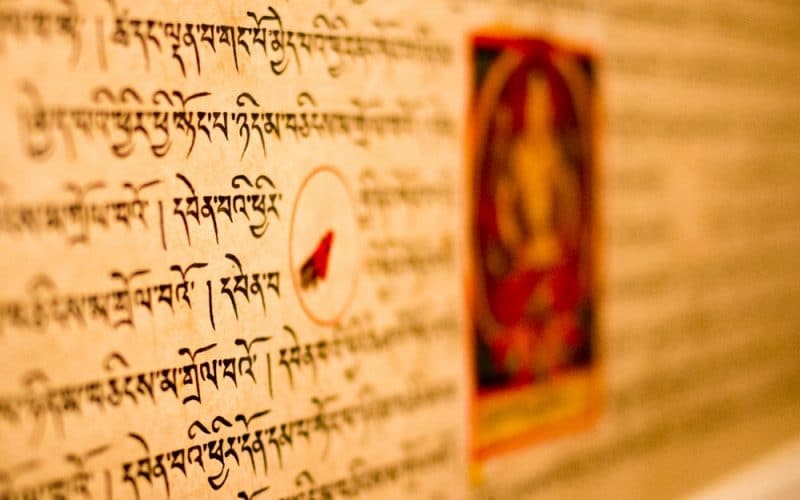




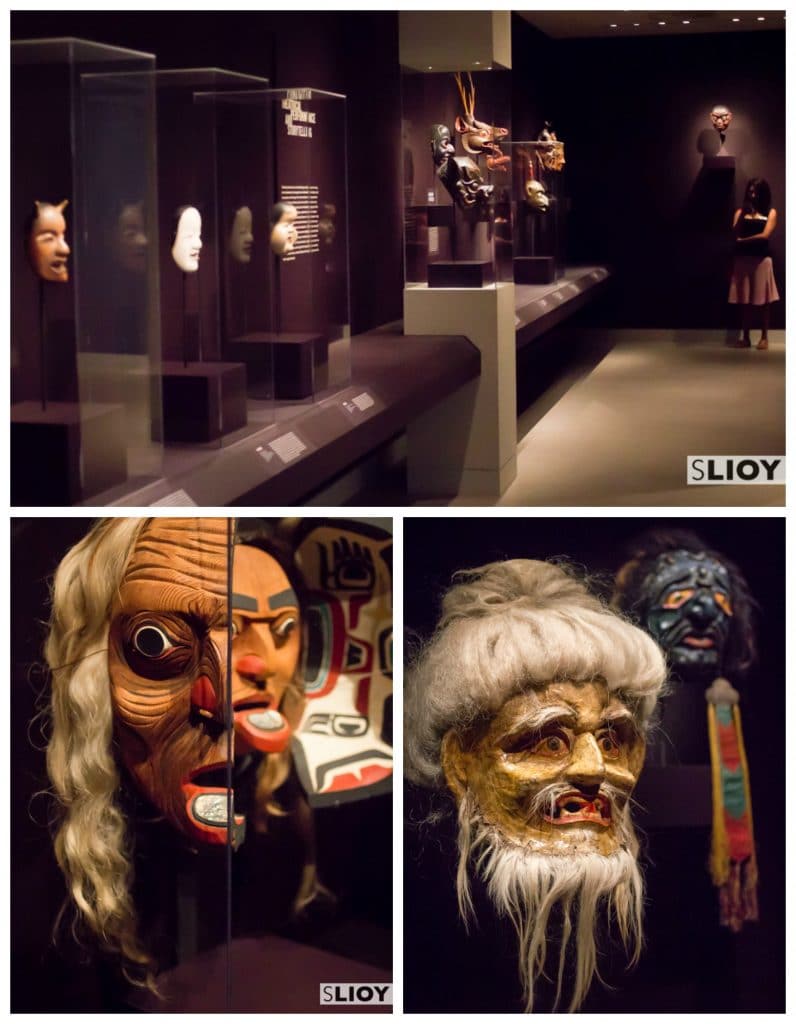
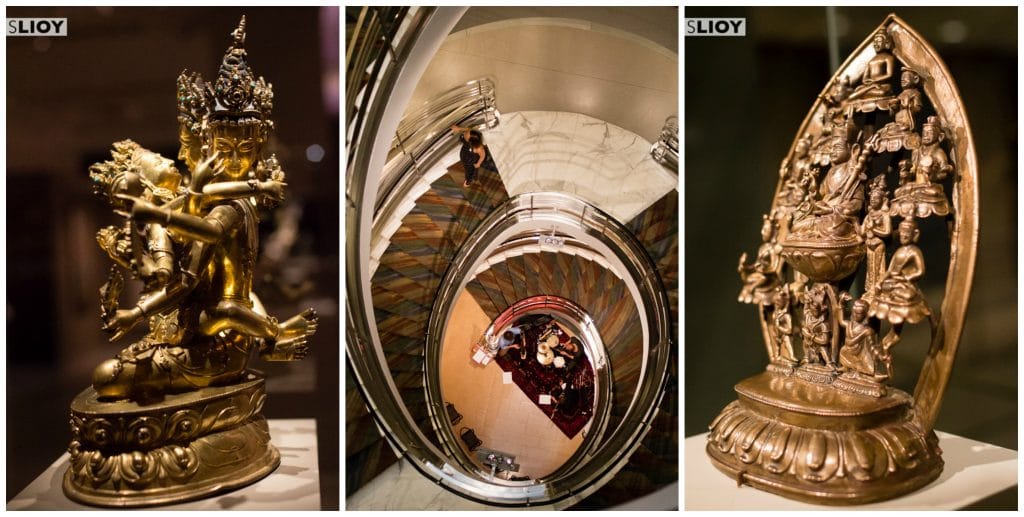

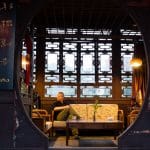


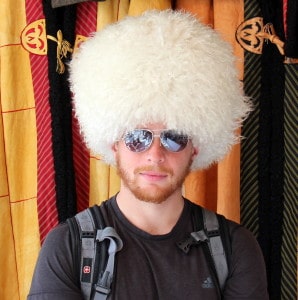
Yay Stephen! How wonderful of you to review this awesome exhibit of Himalayan art at the Rubin Museum!! And how I wish I could get there before any of it changes…. In the meantime, thank you for giving us all a beautiful inside look. This area of the world is very close to my heart, so I’m grateful to you for sharing and glad you were there.
Just a heads up: the photo of the “Sanskrit scroll” posted is actually not Sanskrit– it is definitely Tibetan! I’ve studied a little Tibetan language, so it looks VERY familiar. 🙂 It’s difficult to tell how close you were to it when you took the photo, but it looks to me like it is probably a (greatly enlarged) “page” from a pecha (Tibetan religious book). Hubby and I have a (normal-sized) pecha on our small Tibetan Buddhist altar at home—always beautiful and inspiring! Anyway, love the photos you chose to highlight. The shrine room took my breath away! Magnificent. 🙂
Anne, thanks so much for the tip! I’d neglected to jot any notes for that one, so gave it a guess. The shrine room was especially nice in that I stumbled across it while there were few if any other visitors in that corner of the museum, so I had a few quiet moments to take it in. I’ll be in NYC again mid-Jan, actually, so hopefully will have a chance to visit again and see what they’ve put up by then; there’s a Steve McCurry exhibit running through then that definitely appeals to the travel photography side of my interests: http://rubinmuseum.org/events/exhibitions/steve-mccurry-india
Stephen, so happy you were able to be alone in the shrine room for a bit! I can only imagine the wave of awe and peace you must have felt. Wow….
Hope that you will be able to see the McCurry India exhibit in January after all—and now I’m definitely looking forward to your post and exquisite photos from that! In the meantime, happy holidays to you and safe travels always. 🙂